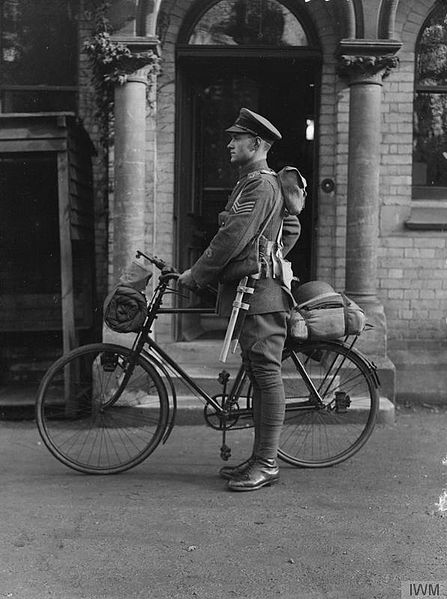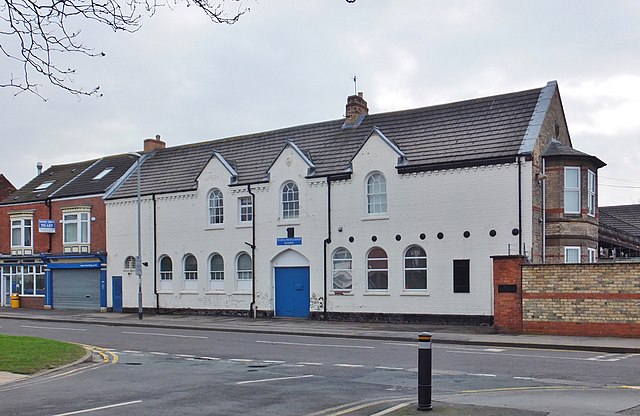5th (Cyclist) Battalion, East Yorkshire Regiment
The 5th (Cyclist) Battalion, East Yorkshire Regiment was a mobile coast defence unit of Britain's Territorial Force. It was formed in 1908 from a nucleus provided by a Volunteer battalion first raised in 1859. It carried out its defence duties along the East Coast throughout World War I and after the war it was incorporated into a unit of the new Royal Corps of Signals.
Cap badge of the East Yorkshire Regiment, granted to the battalion in 1885
British Army cyclist in marching order, 1914–18.
Local politician and commanding officer of the 1/5th (Cyclist) Bn Sir Robert Aske.
The Hull Rifles, later the 4th Battalion, East Yorkshire Regiment, was a unit of Britain's Volunteer Force first raised in Kingston upon Hull in 1859. During the First World War it served on the Western front, seeing a great deal of action at Ypres, the Somme, Arras, and in the German spring offensive, when it was virtually destroyed. Its 2nd Line battalion garrisoned Bermuda for much of the war. During the Second World War the 4th Battalion was captured at the Battle of Gazala, but its wartime duplicate unit fought on through the Western Desert, Tunisia and Sicily, and then landed in Normandy on D Day. The battalion served in the postwar Territorial Army until 1960, and its successors in today's Army Reserve continue in Hull.
Cap badge of the East Yorkshire Regiment, granted to the battalion in 1885
Londesborough Barracks, Hull.
Preserved trenches at Sanctuary Wood Museum Hill 62.
British Mark I Male tank, preparing to advance at Flers–Courcelette.






